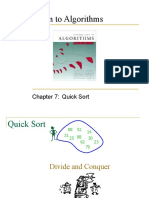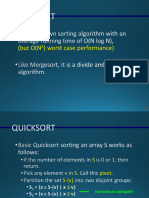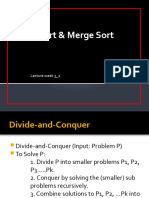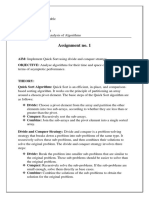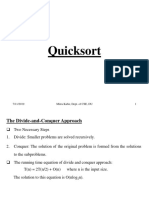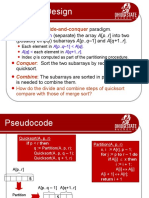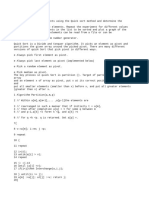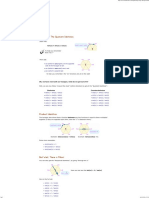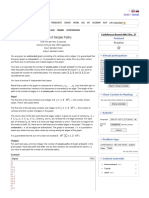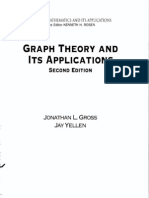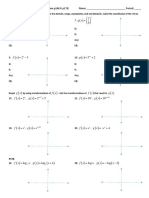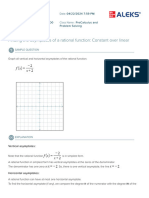0% found this document useful (0 votes)
106 views30 pagesQuick Sort
The document discusses the quicksort algorithm. Quicksort works by (1) dividing a list into two parts based on the value of a pivot element, (2) recursively sorting each part, and (3) combining the sorted parts back into a full sorted list. It is an efficient sorting algorithm with average case performance of O(n log n) time but worst case of O(n^2) if the list is already sorted. The document provides examples and diagrams to illustrate how quicksort partitions lists around a pivot element to recursively sort sublists until the full list is sorted.
Uploaded by
Akif VohraCopyright
© Attribution Non-Commercial (BY-NC)
We take content rights seriously. If you suspect this is your content, claim it here.
Available Formats
Download as PPS, PDF, TXT or read online on Scribd
0% found this document useful (0 votes)
106 views30 pagesQuick Sort
The document discusses the quicksort algorithm. Quicksort works by (1) dividing a list into two parts based on the value of a pivot element, (2) recursively sorting each part, and (3) combining the sorted parts back into a full sorted list. It is an efficient sorting algorithm with average case performance of O(n log n) time but worst case of O(n^2) if the list is already sorted. The document provides examples and diagrams to illustrate how quicksort partitions lists around a pivot element to recursively sort sublists until the full list is sorted.
Uploaded by
Akif VohraCopyright
© Attribution Non-Commercial (BY-NC)
We take content rights seriously. If you suspect this is your content, claim it here.
Available Formats
Download as PPS, PDF, TXT or read online on Scribd
/ 30














